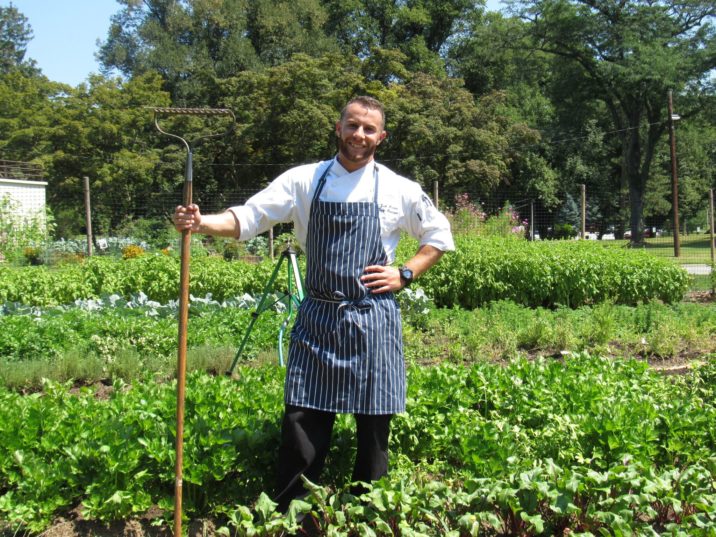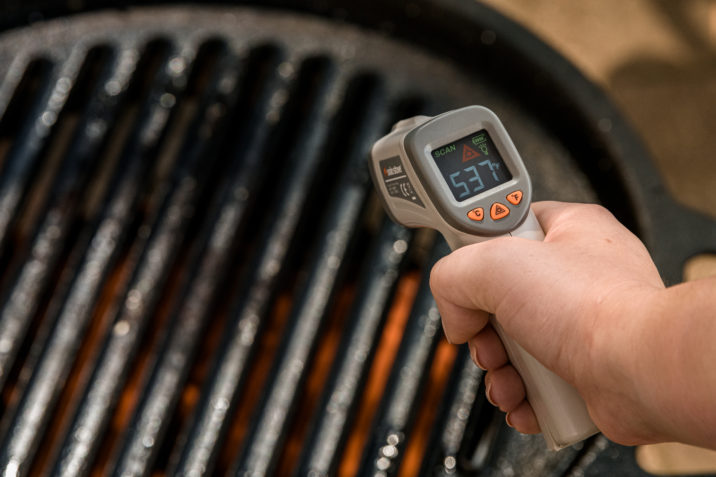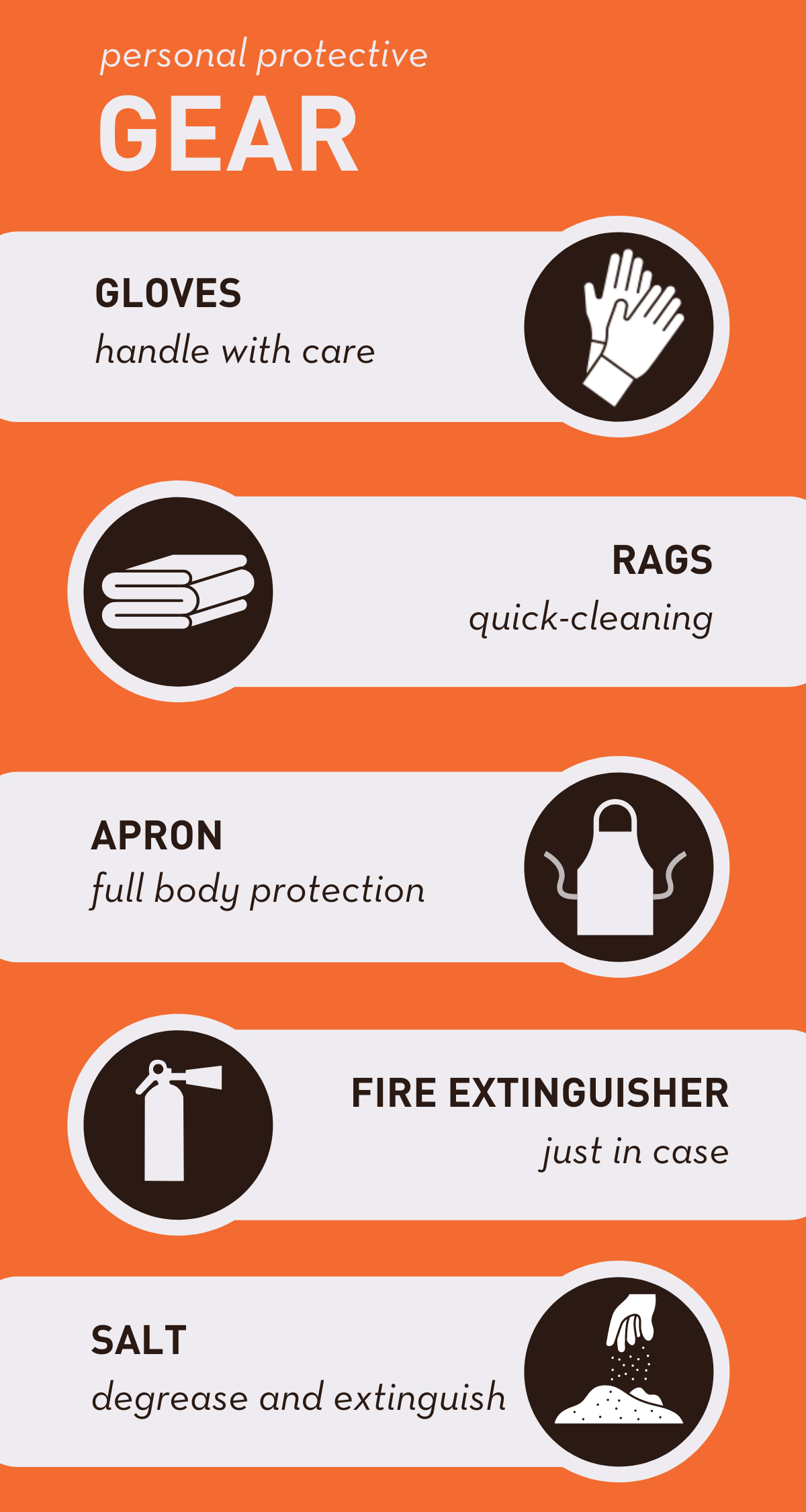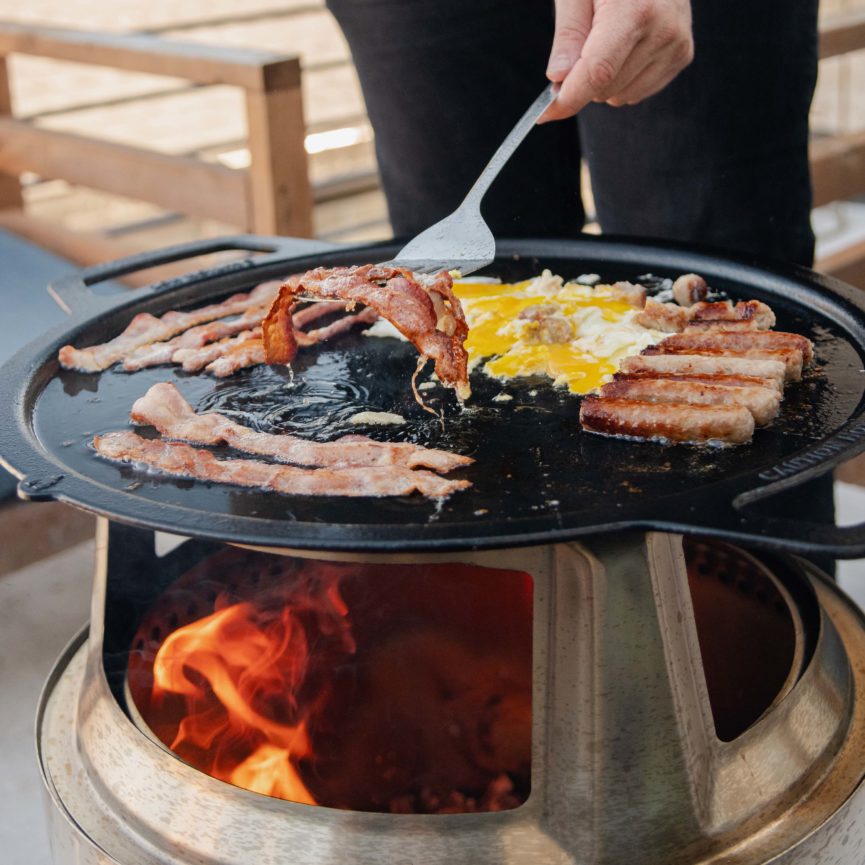An Interview with Chef Josh Arcaro
Curious about how to wield the Fire Pit Cooking System like a pro, we turned to Chef Josh Arcaro for safety tips and all the basics for a successful first burn.

Josh, well-known as @chefbraah, has given us gems like the Herbed Balsamic Steak Sandwich and is back with open-fire cooking wisdom.
Get the inside scoop from an open-fire insider on the safest and best ways to use your Solo Stove Cast Iron Cooktops:
Tips From The Chef’s Table:
Q: “How long does it take you to season a new piece of cast iron?”
A: “It only takes 1 hot ‘burn’ to really get the cast iron ready for ‘seasoning’. A hot burn would be when the metal gets as hot as the wood will allow it to, and might show tones other than black.”
“You would have it heated for upwards of 30 minutes, once the 30-minute mark hits, allow it to cool down a bit, then clean it off without burning yourself– a grill brush should work fine.
Then, seal in the cast iron with a high smoke point oil, like canola with a rag.
Once that is done, you can then officially cook on it. Whatever you cook will season the cast iron.“
Solo Stove’s Seasoning Oil made of 100% Flaxseed Oil is the exception to the high smoke point rule! More on that later. ‘Til then, check out our guide to Cast Iron Seasoning:

Q: “Where do you store your cast iron between uses?”
A: “When finished using the cast iron, scrape off any debris and allow it to cool. Do a final light wipe down. Once completely cool, store in newspaper to protect from contamination and humidity... A suitable drawer could work if it fits.“
Q: “All that carbon on the bottom of your pans– do you ever wish you had custom-fitted carry bags for your cast iron?”
A: “YES all the time, that’s why I have adapted to storing in newspaper.”
You can use Josh’s method, or you can use the Carry Bag of his dreams for your Cast Iron Cooktops!
Q: “Well-seasoned cast iron can ward off rust, but what do you do when the red death rears its ugly head?”
A: “…before using oil to seal, use kosher salt and a rag to use as an abrasive.
The idea is to safely agitate the rust and persuade it to scram with ‘elbow grease’.
Let it cool down– about 15-20 minutes– scrape off the discolored salt residue, clean with a new rag, and do a final wipe down with an oiled rag to seal in the protection.”
Open-fire cooking may be a completely new experience for those in our community, and we knew a tool like the Infrared Thermometer would make or break the first few attempts at seasoning and cooking.
Q: “How could an Infrared Thermometer help a novice chef until they find their ‘swimming legs’?”
A: “Man, I wish these were around when I was in culinary school… but ultimately it will help you learn characteristics of metal (ie. colors, heat waves, and hot spots) quicker. The school of hard knocks were my lessons!”

Q: “Are all seasoning oils created equal?”
A: “No, every oil has a different compound, and people can be allergic to those compounds, so it is best to use a neutral oil with a high smoke point.
A high smoke point is essentially the temperature it takes for the oil to actually start smoking. Higher that temp is the less you have to worry about your oil becoming burnt in flavor and or catching on fire.”
See why Solo Stove’s Seasoning Oil is the exception to the high smoke point rule:

Q: “When you need to fry or sauteé over the fire, what is your go-to oil? Why might someone have a bad time with butter or olive oil?”
A: “Avocado oil, flaxseed oil, and vegetable oil.
Butter and olive oil have a very low smoking point (due to them actually having bits of fruit and milk solids floating within) and will burn a lot sooner than oils with higher smoking points.
Also, go with oils that have higher smoking points but are affordable to you and you enjoy the flavor they bring.”
Q: “There’s a lot of discord in the cast iron community about this subject. When you’re cleaning cast iron do you go soap or no soap?”
A: “Soap once in a blue moon, not regularly,”
If you do use soap, always finish it off with tried and true seasoning methods. Besides a conventional grill brush and dish soap, we are of course huge fans of the Cast Iron Scrubber that debuted earlier this summer with the Fire Pit Cooking System. Soap or no soap, Cast Iron Scrubber will get the job done.
Where oil and fire are concerned it is best to have a game plan just in case:
Q: “Why would a grease fire suddenly break out, and how would you handle a grease fire over an open flame?”
A: “Foremost is, the pan is way too hot. This is where the IR Thermometer could help prevent issues like this tremendously….
Cautiously, evaluate what’s going on before freaking out! See if there is anything else that can catch on fire (ie. tree’s above, outdoor rugs from splattering oil, wood decks, we want to limit the spread)
Make sure your PPE is on and is in a great state to use (don’t use if there are holes or stitching falling apart).
If there is a lid I would immediately put it on to suffocate the fire (fires need oxygen to continue burning). No lid no problem, grab salt to absorb some of the grease, then fire extinguisher from a proper distance.”
“NEVER USE WATER ON A OIL OR GREASE FIRE AS IT WILL SPREAD!
If you have food in the cast iron you are going to sacrifice it, AKA it is only food and isn’t worth it, period. If the fire in the pan is ‘light’ and isn’t emitting tons of black smoke, you can remove the food that is in there and allow the fire to naturally die out.
Get rid of the burnt oil and wipe out the pan to start all over again.”
Josh encourages all seasoning and open-fire cooking to be done with the proper PPE– personal protective equipment. Even the most skilled chefs respect the power of an open flame. Before you get started, make sure you can check off the items on this list:

Q: “Accidents happen to the best of us, what do you keep on hand for spills or emergencies?”
A: “I keep extra salt to absorb and suffocate fires.
Fire extinguishers for grease (Type F and B).
Fire retardant gloves and apron (just in case).
They also make a chemical powder that absorbs grease, I don’t have it but it’s a staple in many commercial kitchens.”
Q: “Can you imagine situations where you would use grilling Gloves over silicon Grips, and vice versa?”
A: “Grilling gloves are certainly more applicable to hotter temperatures… silicon would be lower temps.”
For many chefs, it’s all about the presentation. We developed our new Silicon Mat & Grips for flame-to-table service.
Q: “How does serving straight from the cast iron, rather than plating a recipe, change the dining experience?”
A: “It brings a sense of ‘family style‘ serving of food– that’s what we call it in the kitchen where everyone you are surrounded by is family. It brings everyone together, you can help yourself to however big or small of a portion you like and can even go for the ‘extra crunchies’ of the dish. It is definitely my preferred method of serving and bringing everyone together!“


